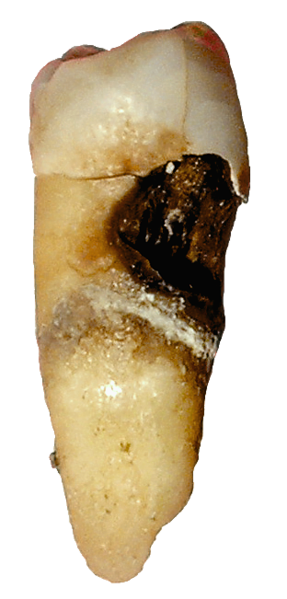 Dental caries is another name for tooth decay where bacterial infection affects the hard outer layer lining of the teeth which is made of enamel, cementum and dentin. Tooth decay is a process that takes quite a while to completely eat away the outer part of teeth, and usually leaves a hole or cavity on it. There are two types of bacteria that have been studied to be responsible for causing dental caries, and they are Lacticobacilli (associated with milk) and Streptococcus mutans. The bacteria live in plaque and break down sugars from diet to produce acidity.
Dental caries is another name for tooth decay where bacterial infection affects the hard outer layer lining of the teeth which is made of enamel, cementum and dentin. Tooth decay is a process that takes quite a while to completely eat away the outer part of teeth, and usually leaves a hole or cavity on it. There are two types of bacteria that have been studied to be responsible for causing dental caries, and they are Lacticobacilli (associated with milk) and Streptococcus mutans. The bacteria live in plaque and break down sugars from diet to produce acidity.
Diagnosis –
Diagnosis for tooth caries is quite simple though the development of this condition is often slow though this rate varies with individuals. However, regular dental check ups can detect it early. It exhibits as milky white teeth on patches. On developing, the acidity caused by the breakdown of sugars by the bacteria, regeneration of the mineral content making a tooth is slowed. Less obvious decays can only be detected when an X-ray is done on the patient’s teeth, and it would show up on the film as a dark spot. In severe cases, there would be a cavity on a tooth exposing the nerves reaching the tooth and making it sensitive and often painful.
Symptoms –
Tooth decay in its early stages exhibit as milky white or chalky teeth. The specific tooth that is affected is usually very sensitive to tough as it can get to be painful, it also gets to be very sensitive to extreme temperatures, hot or cold, as well as sensitivity to sweet substances. A developed cavity can also be easily identified by the discoloration on it.
Prevalence –
Prevalence rates are highest in children under the age of 5 and adults in their fifties plus. These age groups are particularly high risk because of limited care, type of diet and frequent eating. Places without the supply of fluoridated drinking water have also been found to have higher prevalence rates.
Treatment –
As a general rule, the earlier a decaying tooth is detected, the easier the treatment would be to fix it. The decayed part of the tooth is removed using a dentist’s drill and filling is done. The material used in filling is mostly resistant to wear, considering the wet conditions of the mouth and the regular activity that it would be exposed to in terms of eating and brushing. Using baking soda to brush can cure mild tooth decay.
If the condition of the tooth is progressed to affecting the inner part of the tooth through a procedure called root canal, the whole decayed part is removed then the cavity if filled up with a metal pin and covered by a resistant layer that could be metallic called a tooth crown. If the decay is beyond repair, the tooth will have to be extracted and alternatives like implants.
Tooth decay can also be prevented by proper brushing after every meal, flossing to remove any trapped material between teeth and avoiding sugary foods.
dental caries the main enemy to our teeth has been discussed very professionally over here nice post.